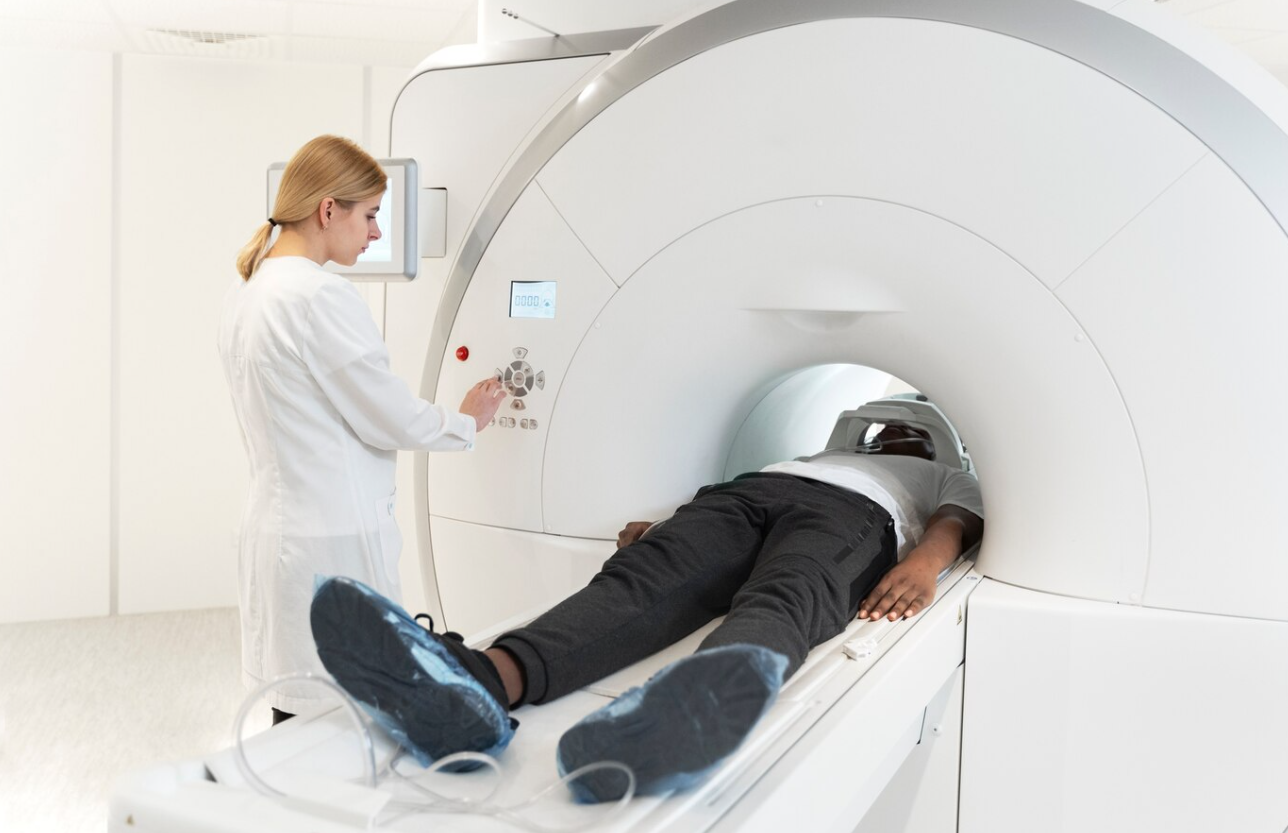
Image-Guided Therapy Systems Market Overview
The image-guided therapy systems market is witnessing steady expansion, projected to grow at a CAGR of approximately 5% during the forecast period. This upward trajectory is largely influenced by the rising burden of chronic diseases globally, ongoing advancements in imaging technologies, and increasing demand for minimally invasive procedures that provide efficient and patient-friendly treatment options. As healthcare systems worldwide adapt to manage growing geriatric populations and the associated rise in complex medical conditions, the adoption of high-precision, image-guided therapeutic solutions continues to accelerate.
Get Free Sample Report: https://meditechinsights.com/image-guided-therapy-systems-market/request-sample/
The rapid integration of cutting-edge technologies such as artificial intelligence (AI), robotics, and augmented reality (AR) is further reshaping the field, enabling enhanced visualization, superior navigation, and improved surgical precision across various medical specialties.
Image-guided therapy systems rely on real-time medical imaging to support surgical and therapeutic procedures by allowing clinicians to visualize internal structures with exceptional clarity. These systems combine imaging modalities such as CT, MRI, ultrasound, and X-rays to guide instruments during delicate procedures, ensuring accurate targeting while minimizing impact on surrounding tissues. By improving precision and reducing the need for invasive surgeries, these advanced systems contribute to shorter recovery times, reduced hospitalization costs, and improved patient outcomes across a wide range of clinical applications.
Expanding Applications of Image-Guided Therapy Across Medical Specialties
The growth of the image-guided therapy systems market is strongly supported by expanding applications across numerous medical specialties, each benefitting from enhanced visualization and precision. In interventional radiology, real-time imaging plays a crucial role in enabling minimally invasive treatments for conditions such as liver tumors, uterine fibroids, and vascular abnormalities. Image guidance ensures accurate placement of catheters, stents, and ablation devices, lowering procedural risks and improving recovery times.
In cardiology, image-guided systems are transforming both diagnostic and therapeutic practices. They provide clinicians with detailed visualization during procedures such as angioplasty, stent placement, and structural heart interventions, allowing optimal treatment strategies with reduced procedural complications. These technologies enhance the ability to assess coronary artery blockages, valve dysfunctions, and blood flow, facilitating improved decision-making and higher procedural success rates.
Neurosurgery is another area where image-guided technologies are indispensable. Given the anatomical complexity of the brain and spine, high-resolution imaging systems help surgeons navigate delicate structures with extraordinary precision. Image-guided neurosurgery is widely used in tumor excisions, epilepsy treatment, deep brain stimulation, and spinal fusion surgeries. The incorporation of intraoperative MRI and CT systems has significantly improved surgical outcomes by enabling real-time visualization during procedures.
In orthopedics, image-guided therapy assists surgeons in performing joint replacements, fracture repairs, and spinal surgeries with heightened accuracy. These systems provide detailed anatomical mapping, helping surgeons minimize errors, ensure proper implant positioning, and reduce postoperative complications. Additionally, as advancements in AR and 3D navigation systems become more widespread, orthopedic procedures are becoming increasingly precise and efficient.
With rapid innovations in AI-driven analytics, robotic-assisted surgical tools, and augmented visualization technologies, the scope of image-guided therapy continues to widen, influencing more treatment pathways and specialty areas each year.
Increasing Preference for Minimally Invasive Procedures Drives Market Demand
The global shift toward minimally invasive surgical procedures represents a major catalyst for the expanding image-guided therapy systems market. Patients and healthcare providers alike are gravitating toward procedures that offer reduced pain, smaller incisions, quicker healing, and fewer post-surgical complications. Minimally invasive techniques rely heavily on imaging technologies that deliver real-time, high-resolution anatomical information, making image guidance an essential component in modern clinical practice.
Advancements in imaging modalities have strengthened the precision and reliability of minimally invasive interventions. Tools such as CT, MRI, and ultrasound provide finely detailed visualization, enabling surgeons to target treatment sites accurately without the need for traditional open surgeries. These advantages are especially beneficial in conditions requiring delicate navigation, such as neurological, cardiac, and oncological procedures.
The demand for image-guided systems is expected to increase as healthcare providers continue to emphasize cost-effective care, reduced hospital stays, and improved patient satisfaction. Patients are increasingly aware of the benefits of early diagnosis and minimally invasive treatment options, which is propelling the market forward. Additionally, the expansion of day-care surgical centers and the availability of advanced hybrid operating rooms further support market growth by enabling the use of state-of-the-art imaging systems in outpatient settings.
Competitive Landscape Analysis
The global image-guided therapy systems market is characterized by the presence of several prominent companies actively involved in technological innovation, strategic partnerships, and geographic expansion. These players are committed to developing advanced imaging systems, integrated surgical platforms, and AI-enhanced guidance tools that improve treatment precision and patient outcomes. Companies also focus on enhancing interoperability across imaging modalities and surgical equipment to streamline workflows in hybrid operating rooms.
Key Players
Koninklijke Philips N.V.
Medtronic
Siemens Healthineers
Analogic Corporation
GE Healthcare
Varian Medical Systems, Inc.
Brainlab AG
Olympus Corporation
Stryker
Canon Medical Systems Corporation
Hitachi Medical Corporation
Market Drivers
Rising prevalence of chronic diseases
Technological advancements in imaging and therapy systems
Growing demand for minimally invasive procedures
Rising geriatric population
Expanding the application of image-guided therapy in various medical fields
Integration of AI, robotics, and augmented reality (AR) into image-guided surgeries
Attractive Opportunities
Growing focus on personalized medicine
Advancements in 3D imaging technologies and navigation systems
Integration of robotics and automation in image-guided therapy
Global Image-guided Therapy Systems Market Segmentation
This report by Medi-Tech Insights provides the size of the global image-guided therapy systems market at the regional- and country level from 2023 to 2030. The report further segments the market based on product, application, and end user.
Market Size & Forecast (2023-2030), By Product, USD Million
- Magnetic Resonance Imaging (MRI)
- Ultrasound Imaging Systems
- Computed Tomography (CT) Scanners
- Endoscopes
- X-ray Fluoroscopy
- Positron Emission Tomography (PET)
- Single Photon Emission Computed Tomography (SPECT)
- Others
Market Size & Forecast (2023-2030), By Application, USD Million
- Cardiac Surgery
- Orthopedic Surgery
- Gastroenterology
- Urology
- Oncology Surgery
- Neurosurgery
- Others
Market Size & Forecast (2023-2030), By End User, USD Million
- Hospitals
- Specialty Clinics
- Ambulatory Surgical Centers
- Research & Academic Institutions
Key Request a free sample copy or view report summary: https://meditechinsights.com/image-guided-therapy-systems-market/request-sample/
About Medi-Tech Insights
Medi-Tech Insights is a healthcare-focused business research & insights firm. Our clients include Fortune 500 companies, blue-chip investors & hyper-growth start-ups. We have completed 100+ projects in Digital Health, Healthcare IT, Medical Technology, Medical Devices & Pharma Services in the areas of market assessments, due diligence, competitive intelligence, market sizing and forecasting, pricing analysis & go-to-market strategy. Our methodology includes rigorous secondary research combined with deep-dive interviews with industry-leading CXO, VPs, and key demand/supply side decision-makers.
